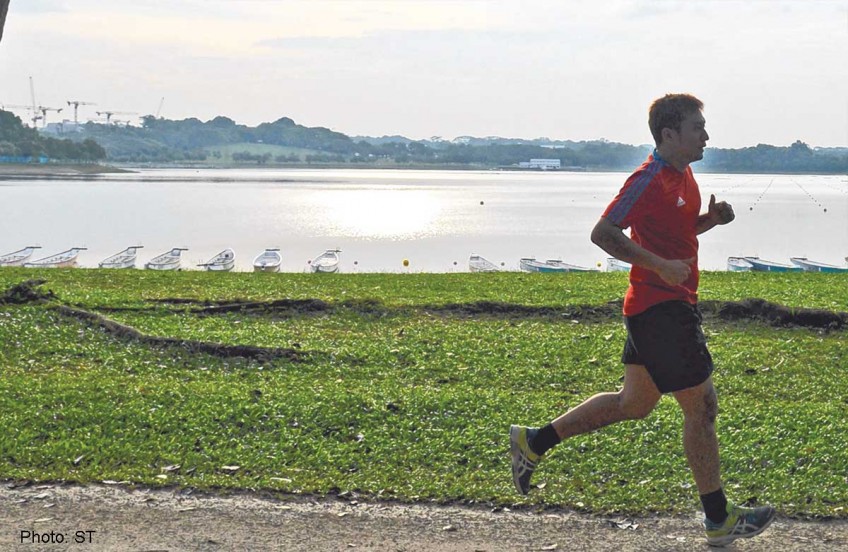Runners must take steps to end pain


This debate keeps all runners on their toes, so to speak.
One point of view is that runners should land each step on their heel; the other argument is that it is best to land on the forefoot instead.
Generally, there are only two points of agreement for both sides.
First, that running is a high-impact activity. Second, that because of the pounding, steps must be taken to reduce the repetitive impact to avoid injuries.
In order to form your own opinion on the heel-versus-forefoot debate, you can try out the following scenarios.
When barefoot, try jumping vertically and pay attention to how you instinctively land on the balls of your feet in order to absorb the impact.
Next, with footwear on, try to stamp as heavily as you can and you will notice that the heels take a lot of wear and tear.
Instead, landing on the forefoot or the meaty mid-foot section will help you run lighter, better and put less stress on your feet.
Trying to land on your forefoot or mid-foot is only the first step to running light.
It is still easy to run clumsily and hurt yourself if you do not make a habit of landing lightly.
One popular technique is Chi running, which reduces potential injury and improves efficiency.
The other is the Pose method that emphasises weight and balance.
But here are some simple tips to help you get started.
When trying to increase your pace, focus on increasing your cadence (the number of steps per minute) instead of widening your stride.
Over-striding forces a person to land on their heels, whereas the most natural way to land on the forefoot is to land your feet under the hip - rather than in front of it - and therefore use the kick back for power.
Drills are a great way to put exaggeration into movements in order to get a technique into muscle memory.
Jog on the spot, land on your forefeet and kick back towards your gluteus maximus for each step.
Shoes also play a part in landing correctly and lightly.
Look for shoes that have "zero-drop" or uniform thickness of the sole.
Traditional shoes usually have raised heels, making it hard not to land on them.
The use of intervals in anaerobic training is also crucial. Arthur Lydiard, a well-known New Zealand distance coach, figured out that 800m intervals are optimal.
Always warm up properly before doing your hard runs.
Jog for 20 minutes or more to increase blood flow and heart rate.
Try a 1:1 ratio for your 800m intervals, jogging 800m for every 800m sprint.
Work on increasing the number of laps over time as the effectiveness will increase accordingly.
Remember too that anaerobic workouts need to be spaced out over 48 hours to allow your body to recover.

This article was first published on August 23, 2014.
Get a copy of The Straits Times or go to straitstimes.com for more stories.